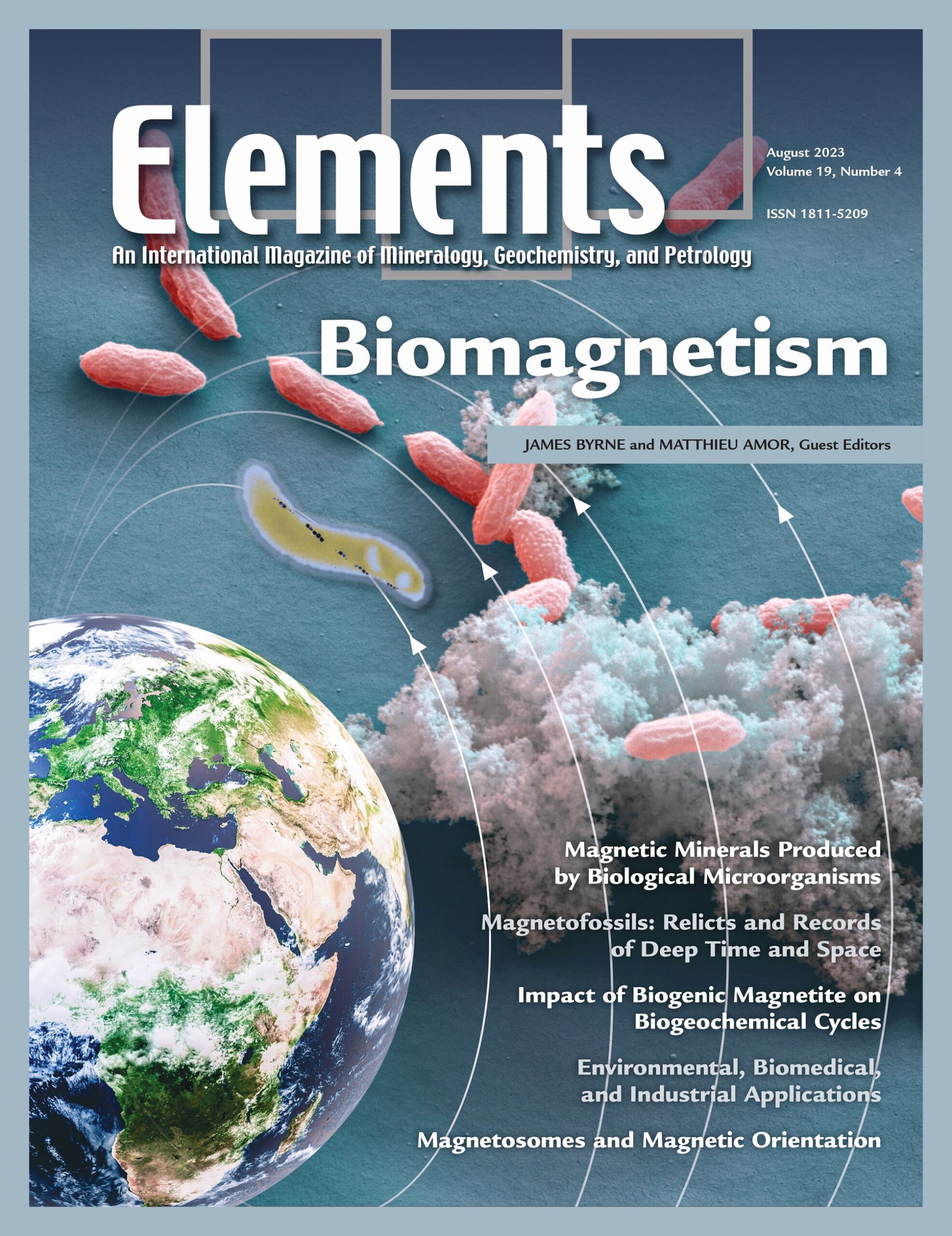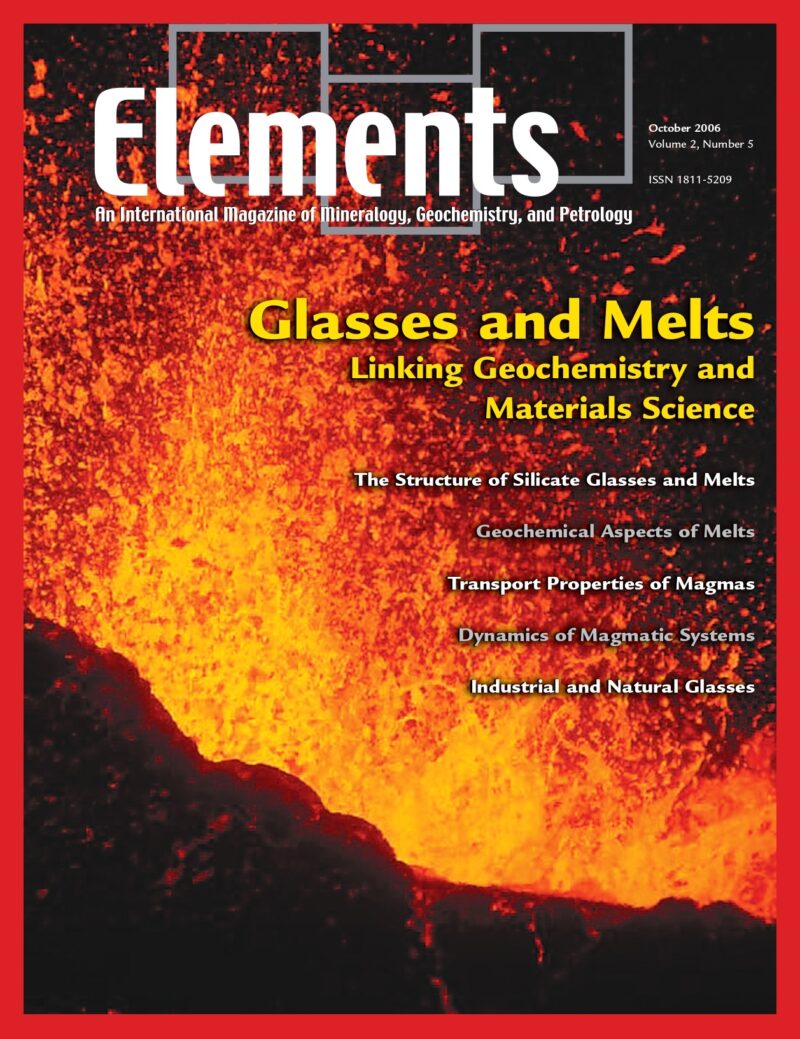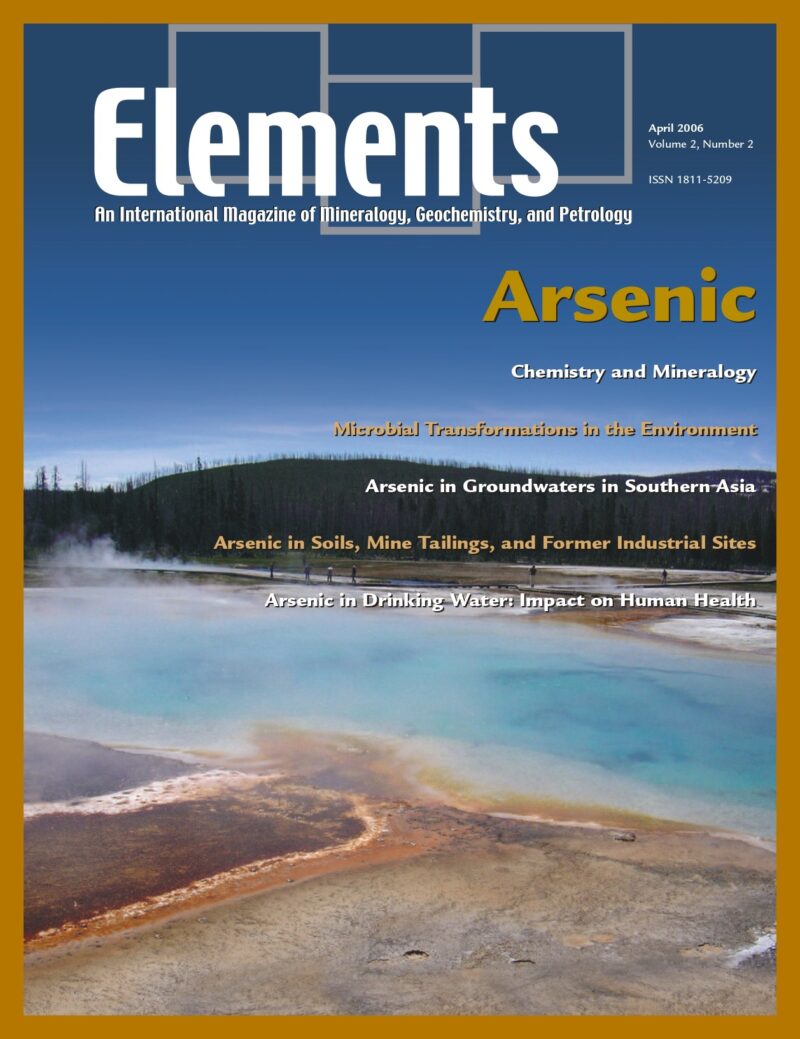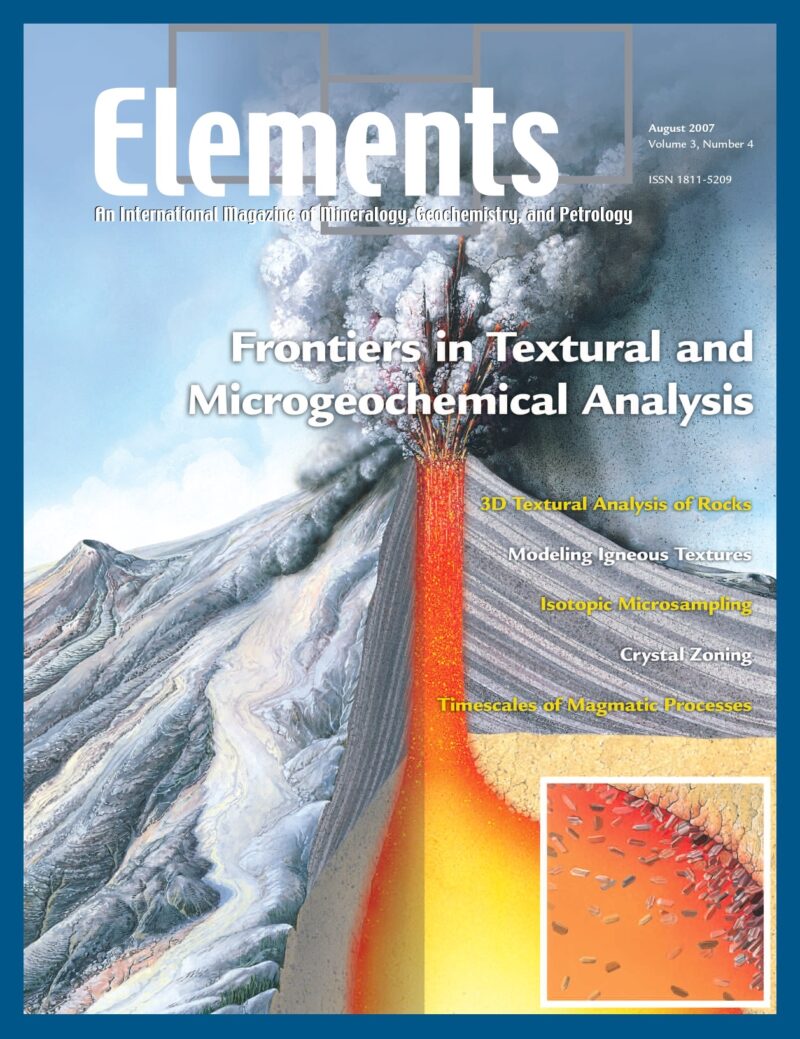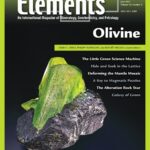
Olivine, June 2023, Vol. 19, No. 3
June 28, 2024
Elements Joint Society Calendar (2025–2026)
July 17, 2024Biomagnetism, August 2023, Vol. 19, No. 4
$20.00
In this thematic issue of Elements, we look into biomagnetism and the production of magnetic minerals by microorganisms. In popular culture, this may have supernatural connotations; however, in reality, there are many microscopic biological organisms possessing magnetic behaviour owing to their formation of magnetic nanoparticles (MNP) such as magnetite (Fe3O4), maghemite (γ-Fe2O3), and greigite (Fe3S4).
Biomagnetism
August 2023, Vol. 19, No. 4
In this thematic issue of Elements, we look into biomagnetism and the production of magnetic minerals by microorganisms. In popular culture, this may have supernatural connotations; however, in reality, there are many microscopic biological organisms possessing magnetic behaviour owing to their formation of magnetic nanoparticles (MNP) such as magnetite (Fe3O4), maghemite (γ-Fe2O3), and greigite (Fe3S4). We look broadly at the relationship between biogenic MNP formation and biomagnetism: focusing on the mechanisms responsible for these minerals by bacteria; seeking to address whether MNP hold clues to the evolution of life on Earth, and potentially beyond; investigating the contribution of biomagnetism to the biogeochemical cycling of iron; considering the potential application of MNP for industrial remediation; and probing the presence of MNP in multicellular prokaryotes and eukaryotic organisms.
Why You’ll Love Elements Magazine:
- Expert Contributors: Articles written by renowned researchers in the field of geoscience.
- Engaging Content: Join a community of readers who are passionate about Elements.
- Exceptional Quality: Each issue is printed on high-quality paper with stunning visuals and detailed illustrations that bring complex scientific concepts to life.
Order your copy of the August 2023 issue of Elements magazine today and explore biomagnetism.
Related products
-
Glasses And Melts: Linking Geochemistry And Materials Science, October 2006, Vol. 2, No. 5
$20.00Geological interest in studying melts stems from early recognition that melts play a fundamental role in determining the physical and chemical behaviour of magmas and magmatic processes. However, due to the inherent difficulties associated with working at high temperatures, much of the geological research over the last 30 years has used quenched melts or glasses as proxies for melts themselves.
-
Arsenic, April 2006, Vol. 2, No. 2
$20.00Arsenic is an element known throughout history as a classic poison. Currently, very small but highly significant concentrations of this element in drinking water supplies are causing massive health problems to many millions of people in some of the world’s poorest nations, and more localised sources related to mining and processing are also a concern.
-
Frontiers In Textural And Microgeochemical Analysis, August 2007, Vol. 3, No. 4
$20.00Recent advances have been made in high-resolution in situ methods to image mineral growth patterns, analyse compositional and isotopic zonation, and improve our ability to visualize, study, and model rock textures in three dimensions. These advances provide a significant step forward in the understanding of how rocks form and the history they can tell us.

